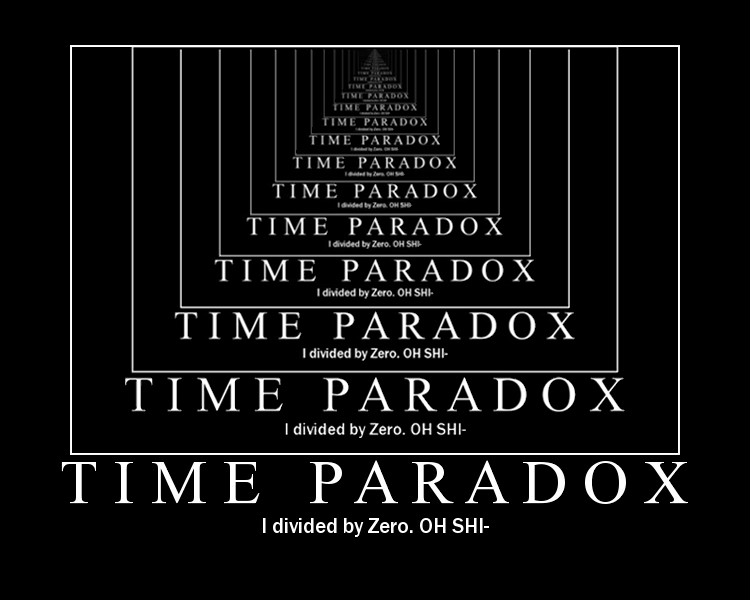Skip to comments.
Biggest black hole in the cosmos discovered (18 billion suns)
New Scientist ^
| 1/10/08
| David Shiga
Posted on 01/10/2008 12:52:18 PM PST by LibWhacker

The quasar OJ287 contains two black holes (this
slightly dated illustration lists the larger black hole's
mass as 17 billion Suns, though researchers now estimate
it is 18 billion Suns). The smaller black hole crashes
through a disc of material around the larger one twice
every orbit, creating bright outbursts (Illustration:
VISPA)
The most massive known black hole in the universe has been discovered, weighing in with the mass of 18 billion Suns. Observing the orbit of a smaller black hole around this monster has allowed astronomers to test Einstein's theory of general relativity with stronger gravitational fields than ever before.
(Excerpt) Read more at space.newscientist.com ...
TOPICS: Astronomy; Science
KEYWORDS: astronomy; bigbang; biggest; black; blackhole; dividebyzero; doomsday; gammaraybursts; gigo; haltonarp; hole; science; space; stringtheory; supernova
Navigation: use the links below to view more comments.
first previous 1-20, 21-40, 41-60, 61-80, 81-90 next last
To: LibWhacker
Crickey a 12647 AU orbital axis and it makes an orbit in 12 years? Holy crap that sucker is moving is FAST. Must be close to 14,000 km/second in orbital velocity.
41
posted on
01/10/2008 1:20:20 PM PST
by
Centurion2000
(It's only arrogance if you can't back it up.)
To: LibWhacker
Biggest black hole in the cosmos discovered

42
posted on
01/10/2008 1:21:09 PM PST
by
dead
(I've got my eye out for Mullah Omar.)
To: CarrotAndStick
I thought blackholes had a difference in mass, depending on the amount of matter that went into it... more mass absorbed = more massive blackhole, with bigger gravity effects surrounding it.
Bigger gravity, yes. But, bigger size? I thought not! If a singularity is of just one size, then the illustration would have to be of equal sizes for both black holes.
43
posted on
01/10/2008 1:21:47 PM PST
by
adorno
To: HamiltonJay
I’m pretty sure they could orbit each other for billions of years, no problem (though this precession business might be sapping energy from the system), just like tiny Pluto has orbited the Sun for 4.5 billion years. It’s only when the orbit decays enough that the smaller black hole begins to smash through the accretion disk of the larger black hole that the orbital decay really accelerates.
44
posted on
01/10/2008 1:21:49 PM PST
by
LibWhacker
(Democrats are phony Americans)
To: Obadiah
I am not sure the star registry allows you to name black holes. I was going to name these two Al and Jesse...
45
posted on
01/10/2008 1:21:53 PM PST
by
frithguild
(Credentialed "Arbiter of Conservatism")
To: LibWhacker
Under those types of gravitational forces extremes, ten times all of mankind can be squeezed into the area of a microchip.
Under that amount of pressure, the Empire State Building would easily be squeezed to the size of a human skin cell.
The quasars are so dense, a single drop of the material would weigh 200million tons.
46
posted on
01/10/2008 1:22:05 PM PST
by
shbox
(BobbyHill: "What's the matter with those people, Dad?" HankHill: "They're hippies, son")
To: adorno
The illustration is not of the black hole, proper, but of the event horizon which, of course, is larger for more massive black holes.
47
posted on
01/10/2008 1:23:06 PM PST
by
LibWhacker
(Democrats are phony Americans)
To: adorno
that’s my understanding as well..........
48
posted on
01/10/2008 1:25:25 PM PST
by
advertising guy
(If computer skills named us, I'd be back-space delete.)
To: zencat; G L Tirebiter
The distance from the Sun to the Earth (one atronomical unit)is also a standard measurement.
49
posted on
01/10/2008 1:27:04 PM PST
by
shbox
(BobbyHill: "What's the matter with those people, Dad?" HankHill: "They're hippies, son")
To: LibWhacker
The illustration is not of the black hole, proper, but of the event horizon which, of course, is larger for more massive black holes.
You might be right, but...
If the event horizon is a major trait of the black hole "environment" why is the accretion disk illustrated and not the event horizon?
50
posted on
01/10/2008 1:28:16 PM PST
by
adorno
To: adorno
51
posted on
01/10/2008 1:28:42 PM PST
by
CarrotAndStick
(The articles posted by me needn't necessarily reflect my opinion.)
To: advertising guy
No, not fuzzy at all. There are non-fuzzy equations in physics that allow you to calculate the masses if you know the period, etc.
52
posted on
01/10/2008 1:29:08 PM PST
by
LibWhacker
(Democrats are phony Americans)
To: HamiltonJay
"The mass and therfore gravitational difference is insane... the orbit of the smaller should degrade quickly I would figure... "The mass of the 2 objects doesn't matter all by itself. The 2 objects have a field between them and trajectories. Leaving the trajectories out of the calculation results in the error that they'll collide. The mass ratio is only 170, so they're both dancing. Since they're black holes though, the mass of each object is increasing, and the accretion disks are providing friction. That means the orbits will slowly degrade.
Note that the field is very high, so the warpage of space around the 2 is huge. That means that clocks in that region of space run very slow. Even though the ~separation is 0.2 light years, the orbital frequency is 12 years. So, the degradation will be very slow.
53
posted on
01/10/2008 1:29:34 PM PST
by
spunkets
("Freedom is about authority", Rudy Giuliani, gun grabber)
To: LibWhacker
39 degree precession per orbit on a 12 year overall orbit that is highly eliptical with the smaller coming very close to the larger.. more like a comet around the sun than PLUTO in terms of how its portrayed, only with a much much smaller orbit than any comet I can think of.
The article says they anticipate absorbtion of the smaller in 10,000 years.... that seems way longer that I would expect given the nature of the system and the insane mass differentials.
To: sodpoodle; HamiltonJay
They have probably already had the orbit decay and collide with the energy release going into a massive Gamma Ray Burst like two opposing shotguns. At 3.5 billion Light Years away we ought to recede fast enough to not see it for another billion years.
Or maybe next Tuesday at 8:19 am EST just as Hillary gives a speech in SC.
55
posted on
01/10/2008 1:30:50 PM PST
by
KC Burke
(Men of intemperate minds can never be free...their passions forge their fetters.)
To: adorno
It is illustrated since the more massive black hole is depicted to be the largest of the two.
56
posted on
01/10/2008 1:31:15 PM PST
by
LibWhacker
(Democrats are phony Americans)
To: CarrotAndStick
I believe the merger happened approx. 3.5 billion years ago. But the GRB’s jet, if it’s aimed in our direction, won’t hit us for another 10,000 years. Yikes!
57
posted on
01/10/2008 1:33:54 PM PST
by
LibWhacker
(Democrats are phony Americans)
To: weegee
58
posted on
01/10/2008 1:34:17 PM PST
by
JRios1968
(Don't mess with tigers, for you are crunchy and chewy...)
To: spunkets
then all that means it is severly smaller in the middle than her edges ?
59
posted on
01/10/2008 1:35:27 PM PST
by
advertising guy
(If computer skills named us, I'd be back-space delete.)
To: LibWhacker
The quasar OJ287 contains two black holes (this slightly dated illustration lists the larger black hole's mass as 17 billion Suns, though researchers now estimate it is 18 billion Suns)Whew!!!! Am I glad they corrected that!!!
60
posted on
01/10/2008 1:37:00 PM PST
by
JRios1968
(Don't mess with tigers, for you are crunchy and chewy...)
Navigation: use the links below to view more comments.
first previous 1-20, 21-40, 41-60, 61-80, 81-90 next last
Disclaimer:
Opinions posted on Free Republic are those of the individual
posters and do not necessarily represent the opinion of Free Republic or its
management. All materials posted herein are protected by copyright law and the
exemption for fair use of copyrighted works.
FreeRepublic.com is powered by software copyright 2000-2008 John Robinson


